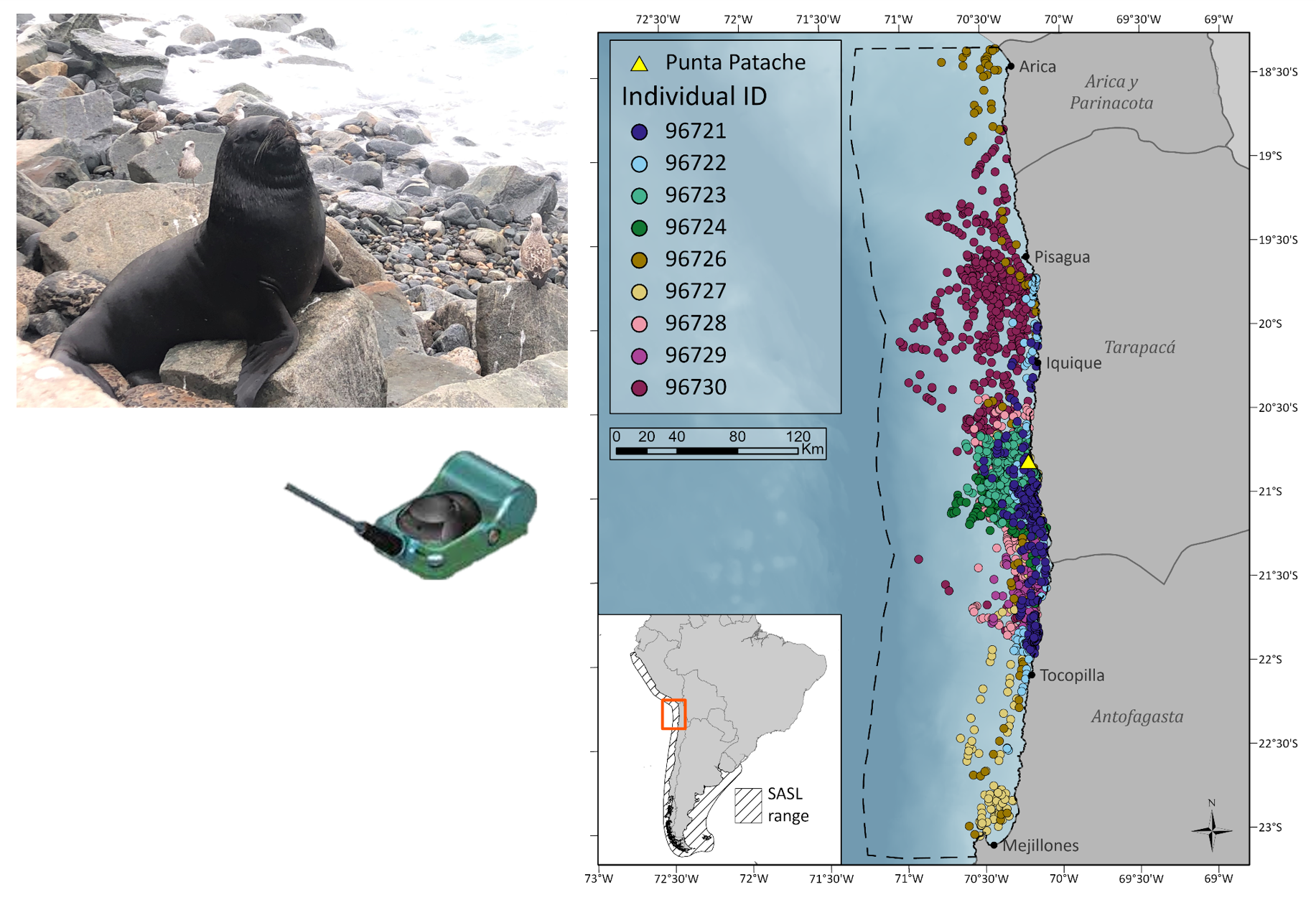Habitat and bycatch risk of South American sea lions in northern Chile

Abstract
Understanding spatial patterns of animal habitat use is important for aligning conservation management efforts, but data on mobile marine species are often limited. This research uses satellite telemetry data of South American sea lions (n = 9), from 2011 (July-November), to model marine habitat suitability and characterize bycatch risk in fisheries in northern Chile. We used a dual modeling approach to estimate both potential (population-level) and realized (individual-level) distributions for female and juvenile sea lions. Topographic variables and remotely sensed oceanographic data were combined with sea lion locations and pseudo-absences in a generalized linear model (GLM), for population-level distribution. For the individual approach, we used a mixed-effects model (GLMM), with additional variables including an individual identifier and a dispersal kernel to capture individual site fidelity. Spatial predictions from both approaches were combined in a bivariate color map. To characterize bycatch in industrial and artisanal purse-seine fisheries, we used an open-source, geographic information systems (GIS) based risk model, the Bycatch Risk Assessment tool (ByRA). ByRA calculates risk as a function of exposure to a stressor (e.g. fishing) and consequence of exposure for the population. Our exposure criteria included the combined map of sea lion distribution and maps of fishing intensity based on data from onboard scientific observers from 2017 and 2018.
The spatial habitat predictions from both models indicate high suitability near the coast but with more constraint in the individual model prediction. Our results indicate a population-level association with productive, shallow, low slope waters, near to river-mouths, with high eddy activity. Individual distribution was associated with shallow slopes, cool waters, and the geographic dispersal kernel. Our bycatch risk outputs identified highest risk to the sampled population from industrial fisheries operating nearshore (within 5 nm). Risk was broadly higher nearshore but was lower for the artisanal fleet. This research demonstrates the use of telemetry data of South American sea lions in a combined modeling approach with implications for fisheries bycatch management.